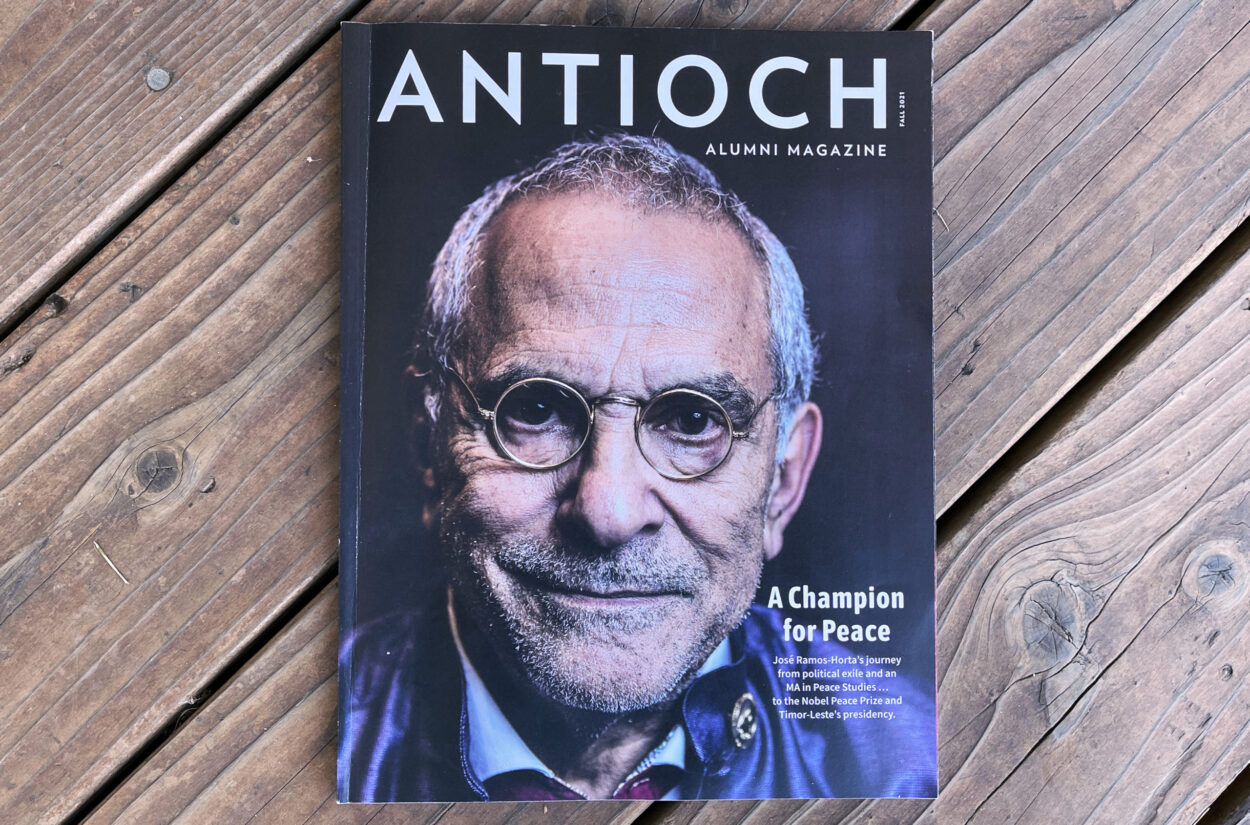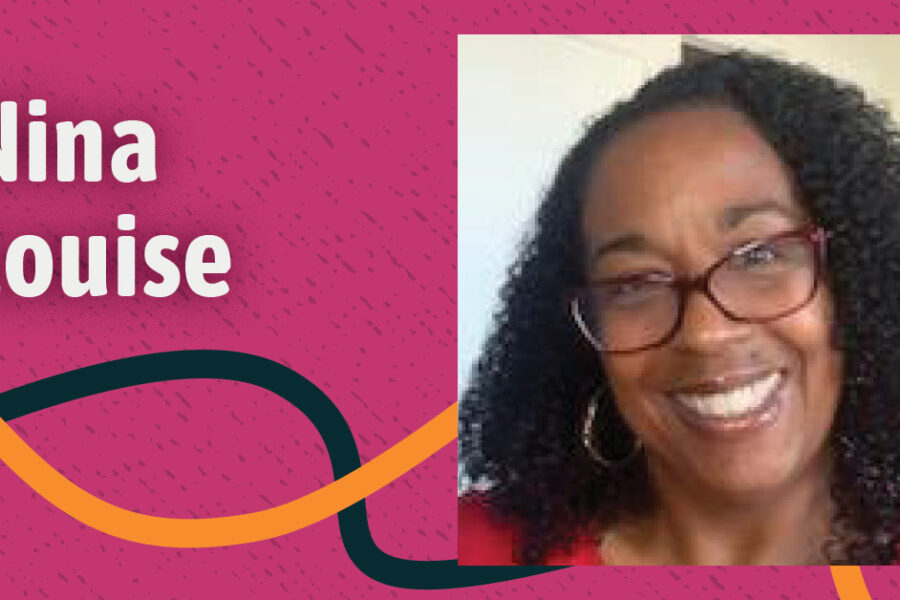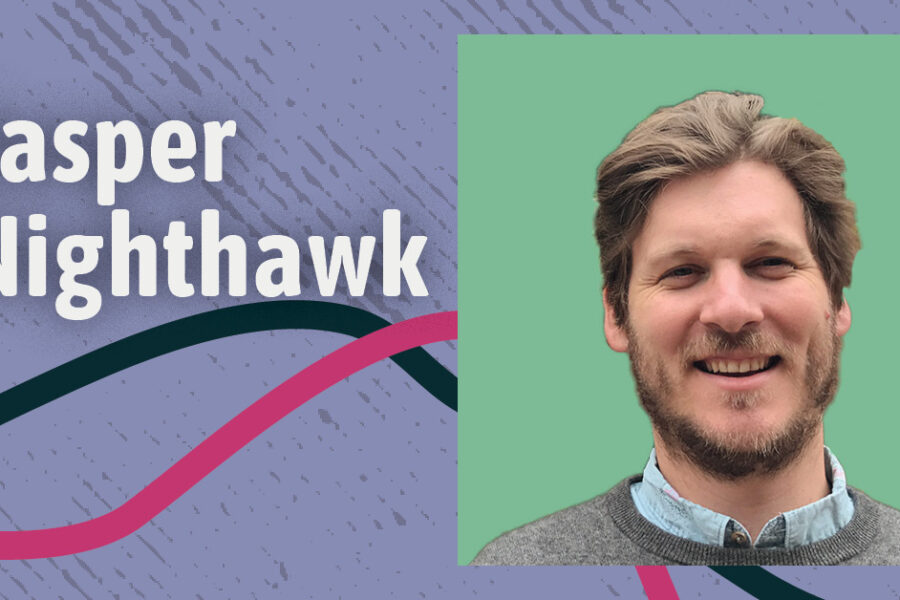“Most of our alumni come as accomplished people. Then, with additional tools and connections they learn at Antioch, they go on to make even more of a difference,” says Laura Andrews, Antioch’s Director of Institutional Advancement. There is no greater proof of the multitude of ways that Antioch alums make a difference than to read through the many stories included in every edition of the annual Antioch Alumni Magazine. This is especially true of the latest edition, which came out in December of 2021 and includes stories of alumni devotedly working in many vital fields, from addiction treatment to green energy, from fighting white supremacy to improving health care leadership, and from drag racing to the cause of peace and self-determination for the “small nations” of the world. The magazine, which was sent in hard copy to a over 41,000 and is also available to read online, truly lives up to its theme of tracing “A Common Thread” between the many Antioch alumni it features.
This starts with the cover story, a profile of the Nobel Peace Prize laureate and Antioch grad José Ramos-Horta. The cover itself features a picture of the man, looking out with a direct and open gaze—and a slight smile tugging at his right cheek. But this might not be the expression you’d expect from someone with his story of political exile and a life’s work fighting for the decolonization of his homeland–a story that eventually leads to him becoming president of his newly-independent home country, Timor-Leste. His story gives a striking example of the kind of people who are drawn to study at Antioch.
Ramos-Horta’s story captures the way that Antioch can serve as a beacon for people who see the world’s problems and want to do something to help resolve them. But as the magazine’s co-editor Jasper Nighthawk says, this commitment “shines through in every story in the magazine.” And it also comes through in the way that the magazine was put together, as it was written entirely by Antioch students and alums. As the magazine’s other co-editor, Karen Hamilton, says, “I am always inspired by the work of our alumni and the talent of our student and alumni writing team.”
Two major features in the magazine explore the stories of Antioch alums making change in the world as mental health professionals. One article, “Helping Overcome Addiction,” traces the work of five alums across the nation who are operating in different areas and levels within mental health to make necessary change in how America treats addiction. Although each of these former students use different methods—from Tik Tok to working within the criminal legal system—they all center the lived realities of their patients. The other feature is a more playful exploration of the ways that Antioch serves populations of successful actors and screenwriters and concert promoters who want to pivot to more satisfying and stable careers in therapy. This article, “Antioch’s Showbiz-to-Psychology Pipeline,” profiles five different therapists with illustrious Hollywood backgrounds.
Part of what makes the magazine an interesting portrait of Antioch university is the opportunity to compare different stories and see the commonalities of how different people take action to embody Antioch’s social justice framework and progressive ideals. Says Nighthawk, “What stuck out to me when we actually heard their stories was the way that their values converged, even if the specifics of their work were different.”
Another way the magazine traces the common thread that unites Antioch is by exploring and capturing the stories of different eras of the always-evolving Antioch University. Through an oral history of Antioch Philadelphia, and also through profiles of a graduate of Antioch Law School and a graduate of Antioch DC, the magazine captures stories of Antioch campuses that have over the decades either closed or become affiliated with other universities. But the stories reveal how their graduates still treasure their connection to Antioch and the affection they feel towards their alma mater. This is part of the intention of the team that puts together the magazine. Andrews explains that it’s valuable for alumni to learn about different campuses and programs over time. As she says, “I hope this is a way for any graduate from any campus, at any year, to have something that makes them feel connected to the Antioch of today and to each other.”
Another overarching purpose of the magazine is to connect alumni and to better understand the way that their studies influenced what they’ve gone on to do in the world. Nighthawk believes that “if we tell these stories in beautiful and powerful ways, that actually helps strengthen our community and share it with others.” It presents an opportunity to create a rich tapestry of the past, present, and future of the institution for people who have their own threads in the weave.
For instance, a story about connections that have been maintained between alumni of the Graduate School of Leadership and Change reveals moving stories of friendship and collaboration. A story about Ellis Farm in Keene, New Hampshire shows how a whole community of Antioch-related people have come together to build a thriving farm. And a history of two of Antioch’s most innovative programs—the Bridge Program at Antioch Los Angeles and the Clemente Program at Antioch Seattle—tracks the way these have for decades now changed their graduates’ lives.
Other articles highlight how Antioch alumni have fought for their communities. A profile of storyteller and civil rights activist Shay Stewart-Bouley captures the spirit of this important crusader. And an exploration of the work of Colleen Echohawk, a recent mayoral candidate in Seattle who centers systemic impacts on Indigenous communities in all of her work showed another way that an Antioch alum is making fighting for change and justice.
A story about four poet laureates—of such big places as Los Angeles, Wisconsin, New Hampshire, and Maryland—seeks to answer the question of how Antioch has “across the decades… proven to be an institution hospitable to poets and capable of nurturing them.” This story, which also includes one poem from each of the poets, profiles such disparate Antiochians as the founder of the MFA program and also a graduate of that program, a graduate of Antioch College, and also a former instructor at the long-since-closed Columbia campus who we learn has remained connected with her students over four decades. Across these four lives, it becomes clear that there is a common thread that unites Antioch as one university.
“The magazine gives us a chance to back up a little bit and think about the university as a whole,” Nighthawk says. Taken as a whole, it functions as a portrait of what Antioch is.
And although these questions are important for alums, whose time at Antioch may be years or decades in the past, the editors also hope that these stories are interesting and valuable to those considering joining the community. “Ultimately, Antioch is just an idea,” Nighthawk says, “and that idea lives in the faculty and students and alumni who choose to come together as a University.”
The magazine also resonates with current students, and especially with the student writers, myself included, who had stories in the magazine. Like Antioch at large, the magazine is a success because of the people that shaped it. As the magazine’s co-editor Hamilton says, “Sharing these stories is one of my greatest joys.”
(Read the full accompanying interview with co-editor Jasper Nighthawk about how the Antioch Alumni Magazine was put together at this link.)



